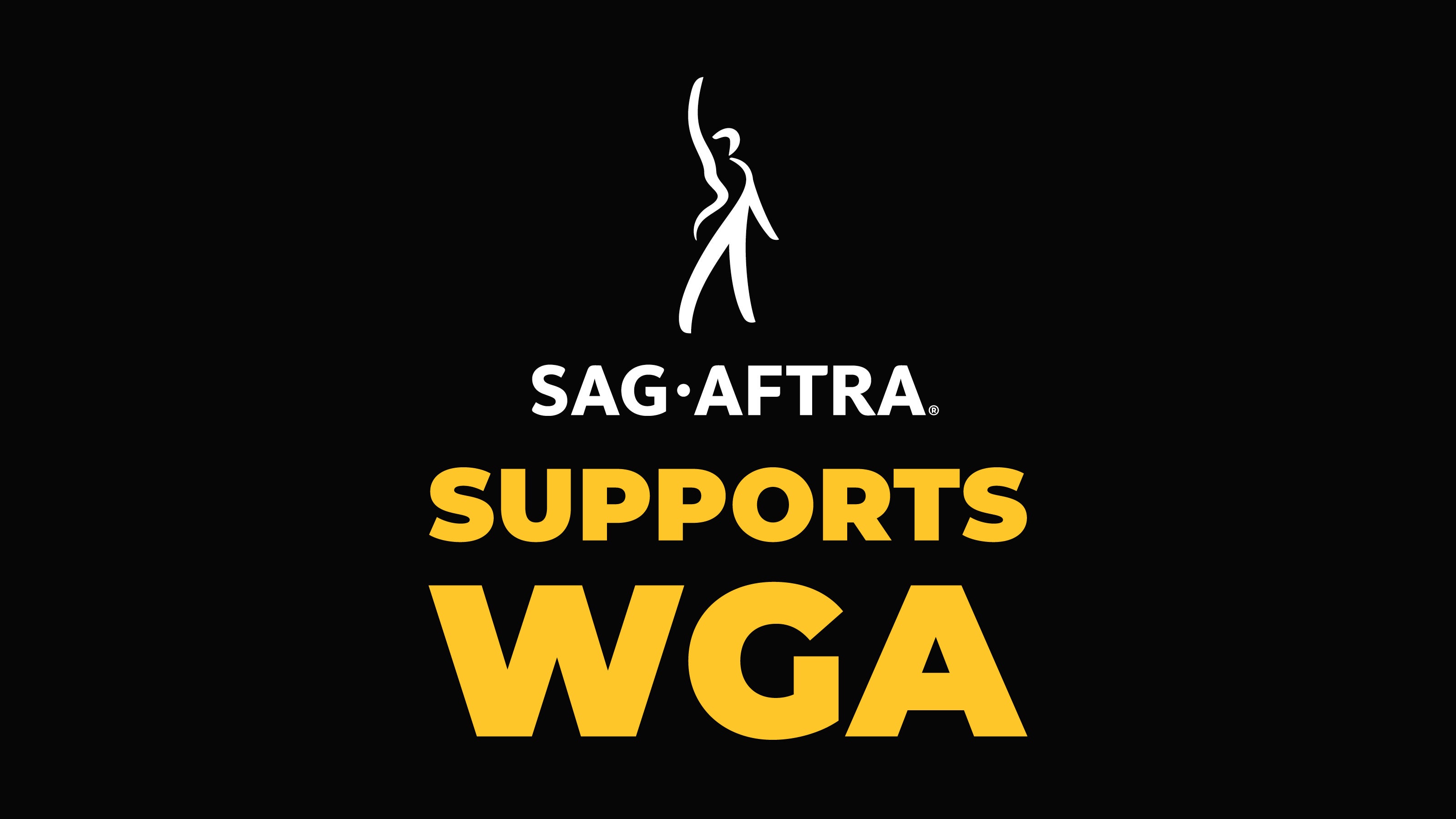
Twelve days into the dual SAG-AFTRA and WGA strikes against the AMPTP, some of the biggest questions about its timeline are beginning to shift — no, not because there’s been any progress made, as AMPTP member companies continue to refuse to meet the demands of the people who make their projects. Instead, now nearly August and with fall programming and release schedules on the horizon, the conversation is slowly becoming less about who is going to give in first and more specifically about how long the studios and streamers can hold out before their content wells run dry.
Granted, less than two weeks into the actors’ strike and nearly two months for the writers, the effects on the current TV and film release schedule have been minimal, given the inconsistent timing and gaps between season releases in modern times, so unless the strike goes on for several months, the prestige TV schedule is unlikely to completely dry up any time soon. While network schedules are currently “strike-proof” with game shows, reruns, series borrowed from streaming services, international shows, and unscripted titles, there has been minimal damage thus far, but with the new TV season coming soon, that will undoubtedly change.
It is increasingly likely that the two strikes will take at least several months before they are resolved, and the closer we get to the usually robust fall TV schedule, the sooner the scramble to fill those gaps intensifies for media companies. It has been reported that the studios’ strategy is to wait out the writers, thinking that the striking WGA members won’t be able to financially wait out the process as long as AMPTP members will. But, the breadth and depth of issues between the studios and the creatives will not be resolved as easily as either side wants, and both the WGA and SAG-AFTRA know how to hold out: the longest action in WGA’s history lasted 22 weeks in 1988, while SAG’s lasted three months in 1980.

Graph and data courtesy of the Writer’s Guild of America
Money is, of course, the name of the game, and writers’ and actors’ demands are not unrealistic, despite what Disney CEO Bob Iger has stated publicly. While the streaming boom led to a wealth of content for consumers and a wealth of wealth for studios and their executives, the people who make and appear in the projects have in large part been left out of the financial windfalls. SAG-AFTRA is seeking that just 2% of the revenue generated by streaming shows be paid to performers, plus increases in minimum rates over their three-year contracts. Studios are currently offering 5%, 4%, and 3.5% increases across the three years, matching rates approved by the Directors Guild of America. SAG-AFTRA, noting that the offered numbers don’t align with the rate of inflation, is asking for 11%, 4%, and 4%.
More streaming-related demands for the unions: SAG struck a deal last year with Netflix to get 18-month limits on option periods, or the time when actors have to wait to hear whether their shows have been renewed; the goal is to get the same deal with the rest of the AMPTP-represented companies. Additionally, the union is seeking a 230% increase in foreign streaming residuals. The AMPTP has said countered by offering 76% instead.
Streaming revenue is not the only thing leading the cause for the dual strikes — other issues include artificial intelligence, the limit on the use of self-tape auditions, pension and health contributions, coverage of nationwide background actors, coverage of performance-capture acting, and more — but money and residuals are the most prominent talking points, especially in contrast to how much studios and streamers are making off of the products.
WGA’s calculations show that between 2000 and 2021, industry profits boomed, increasing from $5 billion to $30 billion as streaming skyrocketed. And while spending also increased, the writers and actors demanding change have not seen the fruits of the economic harvest. The gulf between the AMPTP and the WGA alone is canyon-esque: the proposals the WGA seeks would gain writers collective approximately $429 million per year, and the AMPTP wants to provide an increase of $86 million.

Graph and data courtesy of the Writer’s Guild of America
So, are all AMPTP studios, networks, and companies expected to run entirely out of money before the strike ends? No. But while their collective strategy is to attempt to run writers and actors out of survival money, that is the point of the strike; a race against time and against what will truly break first: the studios’ budgets and content slates or the union members ability to holdout.
The cost of not doing business is higher than networks and especially studios want to admit. For those with major, big-budget film projects in motion alone, such as “Gladiator 2” and “Deadpool 3,” it costs about $600,000 per week to continue to rent soundstages without being able to film on them.
Netflix co-CEO Ted Sarandos claimed that his streamer has “a pretty robust slate of releases to take us into a long time” back in April before the start of the WGA strike. But if you take a look at any major network’s upcoming schedule, you’ll realize this isn’t the case for everybody, despite their “strike-proof” schedules.

While “Abbott Elementary” shows up in ABC’s fall schedule, it’s with reruns, not new episodes, CBS will be missing new episodes of the U.S. version of “Ghosts” and will fill the void with an import of the original British series.
There’s very little help coming for the studios and other conglomerates. According to film permits in California, most of the TV series and movies that were in production or close to production had already stopped with the start of the WGA strike, and actors joining the efforts obviously doesn’t help. Release schedules are already starting to shift for major theatrical releases, including MGM’s “Challengers,” starring Zendaya, which has been pushed from this September to April 2024. Warner Bros. is also eyeing moves from some of its planned blockbusters, including “Dune: Part Two,” “The Color Purple,” and “Aquaman and the Lost Kingdom,” and [Lionsgate] has pushed “White Bird” and its still-in-development “Dirty Dancing” sequel, which will now premiere in Summer 2025 from its original Winter 2024 date.
Even if studios were to release completed projects, the strikes would prevent union members from promoting them, making it far more difficult for she shows and movies to find the audiences needed to make the studios’ financial investments in the projects profitable.
The age of streaming brings a double hit to studios; if there’s nothing getting released in theaters, there’s no subsequent streaming release. The window between theatrical release to streaming release is typically somewhere between 45–100 days with exceptions, meaning that at minimum, once movies do arrive in theaters, they will take at least another month and a half to start populating the shelves in streaming libraries.

Graph and data courtesy of the Writer’s Guild of America
Similarly, while streamers such as Peacock, Hulu, and Paramount+ bring big money to their parent companies with the next-day runs of their shows, as long as there is little new running on broadcast and cable TV, those companies are going to see both their linear and streaming businesses take hits. The independently owned and operated Netflix is in better shape than its counterparts, and as the strike continues if fall network ratings are expected to drop somewhere between 30–40%, the streamer has more staying power.
As the strike continues and shows and films already completed or otherwise stockpiled begin to dry up, streamers will have three options:
-
They can continue to beef up their slates with international programming, particularly Netflix, which relies on non-U.S. series and films more than its competitors. Last week, HBO announced that its Spanish-language series “30 Coins” will premiere on the company’s American cable channel in October, perhaps showing their hand a little early that its fall schedule is looking anemic.
-
They can plan more unscripted content. A lot has changed since the strike of 2007–08, which led to a boom of reality TV. Then, in many ways, social media grew and morphed into reality TV in its own right. Now, studios know they have more options than they used to, but maybe not for long: the physical costs of producing unscripted television, especially at the rapid pace it’ll soon be needed, are high, and the creators behind it are considering some organizing of their own. As for the content creators who have come up through YouTube, TikTok, Twitch, and more, with small and silver-screen goals, they have been told not to join any struck projects for risk of being banned from union membership once the strikes are over.
-
They could meet the demands of the WGA and SAG-AFTRA, but that seems unlikely anytime soon.
In September, the best of television will be honored at the Primetime Emmy Awards… or at least they are supposed to be. The award ceremony itself remains uncertain, with a January backup date being rumored. The MIA Emmys will be the least of the AMPTP’s problems the longer that they decide to play chicken. With projects on hold (and an inability to promote the ones that aren’t), leverage only matters if you have nothing to lose. And in the words of Duncan Crabtree-Ireland, the SAG-AFTRA’S chief negotiator, “The studios and streamers have underestimated our members’ resolve, as they are about to fully discover.”
